True Stories of Ghosts: Encounters Through Time
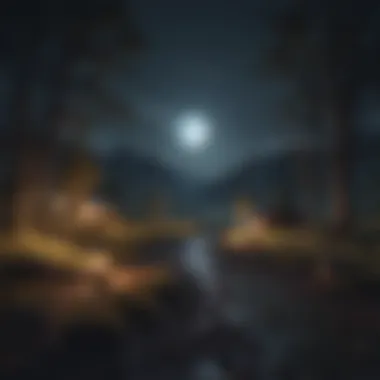

Intro
Ghost stories have long captivated human imagination, echoing through the corridors of history and manifesting in various cultures. They tug at the strings of our psyche, probing our deepest fears and enchanting us with mystery and intrigue. With each tale, there's a mix of disbelief and curiosity that beckons us to listen, explore, and perhaps even question our own perceptions of life and death.
Whether shared around a flickering campfire or whispered in hushed tones at a sleepover, these narratives often serve as more than mere entertainment; they become reflections of societal beliefs, cultural heritage, and the human condition itself. The truth is, ghost stories are much more than spectral figures and eerie sounds; they embody complex themes of loss, longing, and the unknown.
This article will journey through true stories that exemplify ghostly encounters, diving into their historical backgrounds and their significance in modern-day contexts. We'll uncover not only what happens in these tales but also how they resonate on a deeper level.
Brace yourself as we embark on a comprehensive exploration of the mystique surrounding ghost encounters and their place in our collective consciousness. This isn't just a stroll through spooky stories; it's an examination of the threads that bind us to the supernatural.
By the end, readers will gain insights into how these tales reflect our fears, hopes, and perhaps an innate curiosity about what lies beyond the veil of our earthly existence. Are you ready to peel back the layers of these ghostly narratives?
Prelude to Ghost Stories
Ghost stories represent a fascinating intersection of culture, fear, and curiosity, drawing people into an intricate web of narratives that often elude understanding. This article explores the myriad ways in which ghost tales not only entertain but also serve as reflections of our deepest fears and societal values. They reveal much about the historical contexts in which they were born, shaped by human emotions and cultural beliefs.
The allure of a ghost story lies in its dual nature: it simultaneously captivates us while instilling a sense of fear and intrigue. For parents and individuals seeking to enhance their lives through understanding broader cultural phenomena, examining ghost stories can shed light on the human experience, showing how narratives transcend time and place. They form a bridge to our past and serve as a window into collective anxieties and hopes.
"Ghost stories serve not just to frighten us, but to illustrate the values and fears of society."
In understanding ghost stories, we touch on critical elements that include:
- Historical significance: Learning about the origins of ghost tales helps us appreciate their evolution within various cultures.
- Psychological implications: Encountering the unknown forces us to grapple with our own fears and insecurities, therefore these stories often hold profound psychological resonance.
- Cultural reflections: Ghost narratives are same a distilled essence of the cultures from which they originate, offering insights into social norms and collective beliefs.
This exploration leads us into the realms of nature and culture, where our fascination with the paranormal intermingles with various human experiences.
Historical Context
Understanding the historical context of ghost stories provides a crucial lens through which we can interpret the narratives that have shaped human experiences with the supernatural. Ghost stories are not merely tales spun for entertainment; they reflect the cultures, beliefs, and fears of the societies from which they originate. By examining the evolution of these narratives, we uncover insights into how different eras perceived life, death, and what may lie beyond.
Ghostly tales have persisted across time, offering comfort in cultures that historically dealt with tragedy, disease, or war. The significance of these stories can often be seen in how they address the universal questions of mortality and the afterlife. They serve as a bridge, connecting the living with the past, providing a sense of continuity, and often acting as cautionary tales.
Additionally, the storytelling of ghosts can reveal societal norms and values of various periods. For instance, in times when communal ties were strong, ghost stories often emphasized familial connections, illustrating how unresolved issues led to the creation of restless spirits. In contrast, the rise of individualism in more modern societies may transform ghost tales into personal narratives focused on the individual's experiences and emotions, a reflection of society's changing nature.
"Ghost stories are the language of the dead speaking to the living, a timeless dialogue that transcends the ages."
Recognizing the historical context allows us to appreciate not only the content of ghost stories but also their form and function. This brings us to the next stage of our exploration, diving into specific tales from ancient civilizations that have laid the groundwork for our understanding of the spectral world.
Ghostly Legends from Ancient Civilizations
When we turn to ancient civilizations, we see that tales of ghosts often communicated both moral lessons and the cultural fabric of the time. For instance, the ancient Egyptians believed strongly in the afterlife, and their tales of beloved mummies and restless spirits reflect their societal fixation on death rituals. The famous story of the god Osiris, who was murdered and later resurrected, illustrates the important belief in life after death. Such narratives reveal not only the people's fears but also their hopes concerning the afterlife.
Similarly, in ancient Greece, the concept of the psychopomp -- a guide for souls to the afterlife -- sheds light on how these cultures navigated the fear of the unknown. The Orphic texts often spoke of the souls of the deceased requiring assistance to find peace, showcasing a profound respect for the cycle of life and death.
Furthermore, narratives from Indigenous cultures around the world often include spirits who return to impart wisdom or warning to the living. These stories often encapsulate the ethical and moral frameworks of societies, intertwining the spiritual with daily life.
The Development of Ghost Beliefs Through the Ages
As we move through history, the development of ghost beliefs is profoundly intertwined with both the sociopolitical climate and advancements in understanding the natural world. During the Middle Ages, the fear of witches and the influence of superstition crept into ghost narratives. The Black Death led to many legends about restless souls returning to haunt the living due to the manner of their untimely demise or unresolved guilt.
As societies progressed into the Enlightenment, with its focus on reason and science, ghost stories began to change again. Skeptical views rose, and while tales of apparitions persisted, they often took on a more psychological angle. Was it merely the mind playing tricks, or did these encounters signify deeper emotional struggles? This led to a rich tapestry of ghostly encounters rooted more in the psyche rather than purely in myth.
In modern times, the proliferation of media and technology has transformed ghost stories yet again. Now, we not only have written tales and oral traditions, but films, television shows, and online forums where stories are shared and dissected. Ghost encounters have shifted from what was once a reflection of societal fears to becoming a platform for individual expression.
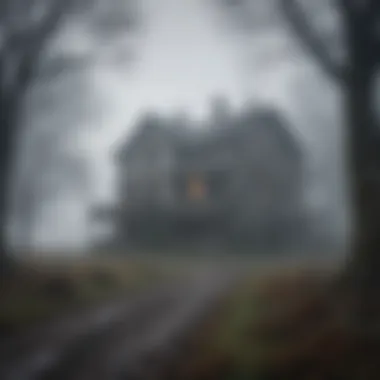
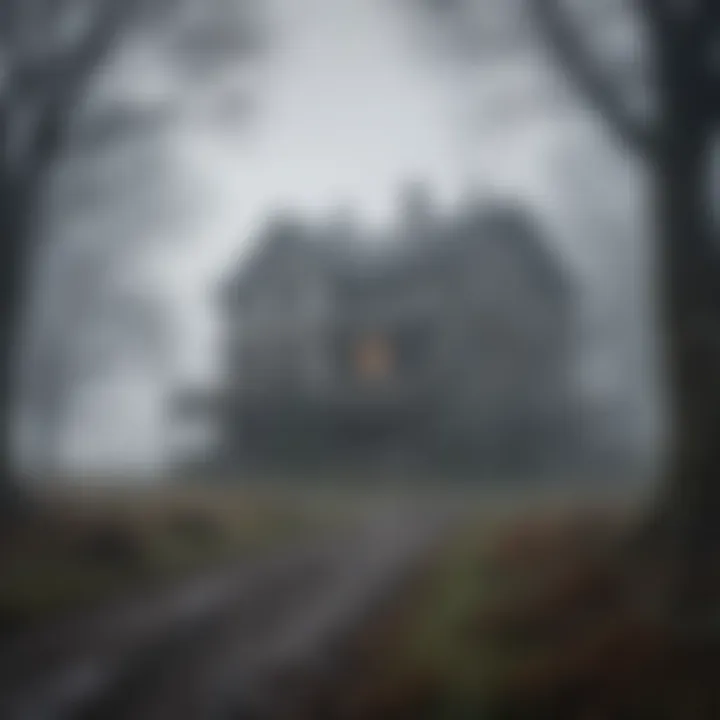
As we piece together these threads, it becomes evident that the fabric of ghostly tales is rich and complex. From ancient legends to contemporary experiences, each story resonates with the fears, hopes, and culture of its time. Understanding this historical context enhances our appreciation for ghost stories and reinforces their power in reflecting the human condition.
Contemporary Ghost Encounters
Contemporary ghost encounters form a significant part of the landscape in ghost storytelling. They link the past with the present, demonstrating how age-old beliefs adapt in a modern context. People often seek these stories not only for entertainment but also to confront their fears or questions about life after death. By understanding these tales, we can gain insights into our collective psyche and how it shapes our interactions with the supernatural.
Personal Narratives and Testimonies
Personal accounts of ghostly encounters offer a rich tapestry of experiences that reflect diverse perspectives. These narratives, often filled with vivid recollections, resonate on a human level. They invite readers to explore the mysteries that lie just beyond their comprehension. Some accounts have been shared on platforms like reddit.com, where individuals recount unforgettable experiences—be it a simple cold breeze in an otherwise still room or witnessing an apparition that left indelible marks on their lives.
- Emotional Investment: The emotional weight of personal narratives makes them compelling. They provoke curiosity and often evoke empathy towards the storyteller.
- Diverse Perspectives: Each story is unique, showcasing cultural backgrounds, personal beliefs, and individual experiences. This variety enriches the overall understanding of ghost encounters.
- Enduring Fascination: Readers frequently feel drawn to others' narratives, making connections that reflect their own fears, hopes, or even experiences.
Many people have shared their eerie interactions, like a young woman who felt a comforting presence after losing her grandmother. The moment was described as both haunting and soothing, forming a bridge between grief and solace.
Evocative Locations and Their Stories
Certain places contribute significantly to contemporary ghost encounters, often becoming characters in their own right. Locations such as old homes, battlefields, and abandoned hospitals pull at the heartstrings and stir the imagination due to their histories and the stories they hold. Some places have become famous for their ethereal presence, sparking interest and exploration.
- Historic Sites: Locations steeped in history tend to amplify ghostly tales. Places like the Winchester Mystery House in California or the Tower of London in the UK attract visitors not merely for their architecture but also for the whispers of those who linger.
- Modern Haunts: There are also modern sites claiming to have hauntings, such as hotels and theaters. The Chrysler Building in New York City has stories about its ghostly construction workers lingering about, reminding all of their monumental touch on the cityscape.
- Cultural Significance: Some locations are tied to local legends and folklore, embodying societal fears, hopes, and joys. They act as a mirror held up to the past, showcasing how the supernatural continues to weave into the fabric of everyday life.
"We do not remember days; we remember moments" — Cesare Pavese
In summary, today's ghost encounters captivate audiences by weaving personal tales with evocative sites, creating an indispensable narrative that opens discussions about mortality, memory, and what it means to belong to both the material and spiritual realms. The meetings may not be universally accepted, but they hold a significant place in our cultural dialogue around life's unanswered questions.
Psychological and Emotional Analysis
Understanding the psychological and emotional frameworks within which ghost stories operate enriches our appreciation of these narratives. Ghostly tales invite us to explore deeper human feelings such as fear, curiosity, and nostalgia. The enduring allure of these stories points not only to their entertainment value but also to their reflection of our innermost thoughts and societal concerns. What is it that captivates us about the unknown, and why do these spectral encounters resonate with both our hearts and minds?
The Intersection of Fear and Fascination
Fear and fascination are like two sides of the same coin, especially when we discuss ghosts. On one hand, fear evokes a primal instinct related to survival; it signifies a threat to our safe space. But there's a peculiar twists: while we fear the unknown, we also find ourselves drawn towards it like moths to a flame. This duality is evident in the popularity of haunted attractions and paranormal investigations, where people willingly seek out the very thing that terrifies them.
A study might show that encountering the supernatural can serve as a cathartic experience. Ghost stories force us to confront our fears in a controlled environment. It’s a safe scare that helps reveal underlying anxieties about death and the afterlife, which are difficult subjects in everyday conversation. These narratives often allow an exploration of mortality within a cultural context, providing both a shield and a lens through which we view our existence.
"Ghost stories compel us to face our fears while simultaneously nurturing a sense of community among those who share in the fright."
This intersection of fear and fascination thereby cultivates a rich ground for discussions about our values and fears. Encountering a story about a ghost might shake a person to their core, but it simultaneously allows them to engage with their deepest existential concerns while in the company of friends or loved ones.
The Role of Memory in Ghost Stories
Memory plays a crucial role in the telling and retelling of ghost stories. These tales often become intertwined with personal experiences, creating a tapestry of shared history and collective memory. When we recall an eerie innovation, it’s often not just about the factual recounting but the emotions and memories that surface alongside it. The ghost becomes a symbolic representation of something we’ve lost or unresolved aspects of our past; it might be the lingering essence of a loved one or an unaddressed trauma.
Interestingly, the longer a ghost story circulates, the more it becomes shaped by these shared memories. Stories may evolve over time, adapting to contemporary issues or cultural phenomena, making them relevant to new audiences. But this adaptation does not diminish their power—in many ways, it enhances it. Ghost stories often reflect current societal anxieties: they morph just as our fears do.
As a result, they not only entertain but also help us navigate the complexities of our own minds. This process of remembrance interweaves emotional responses, effectively crafting a narrative that resonates through generations. Furthermore, communal storytelling about hauntings and spectral sightings fosters an environment where individuals feel an emotional connection to their surroundings, as if the ghosts are part of their own narratives, rather than isolated tales of the macabre.
The Role of Ghosts in Popular Culture
Ghost stories do more than send shivers down spines; they serve as a cultural mirror reflecting society's fears, beliefs, and curiosities. The fascination with the supernatural can be traced through ages, but its stronghold in popular culture is particularly significant today. From literature to films and even to theme park attractions, ghosts are not just elements of horror; they embody deeper narratives that shape our understanding of life, death, and the unknown.
Ghosts in Literature and Film
Ghosts have long haunted the pages of novels and the frames of movies, becoming staples in the narratives that we consume. From classic tales like A Christmas Carol by Charles Dickens to contemporary works such as The Haunting of Hill House by Shirley Jackson, these spectral figures often serve as harbingers of a certain moral or a deeper psychological exploration. In literature, authors craft characters that grapple with their pasts, symbolizing our own struggles with regret and unresolved emotions.
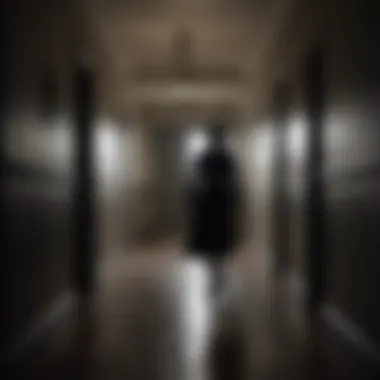
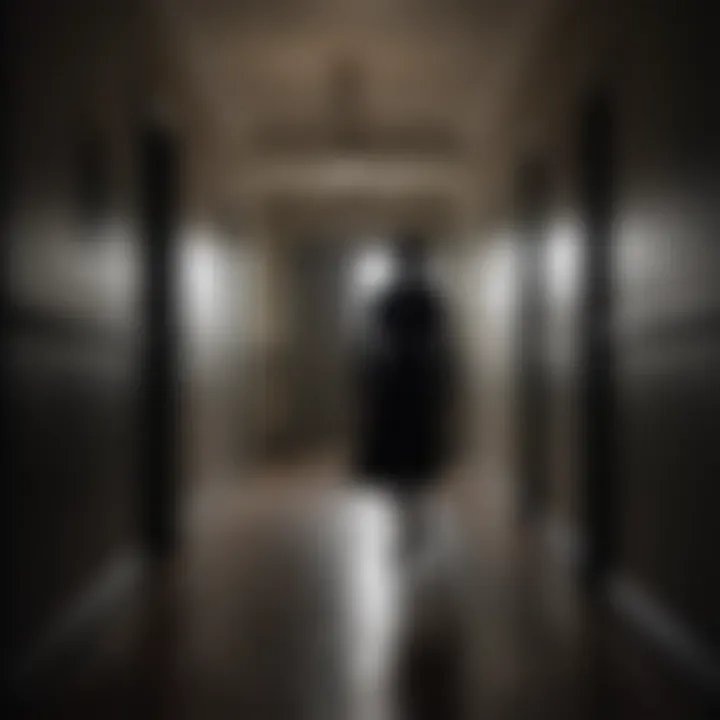
In film, the role of ghosts is equally impactful. Movies like The Sixth Sense and Ghost delve into themes of connection and closure, illustrating how these otherworldly figures can bridge the gap between the living and the deceased. Ghosts often represent unfinished business, prompting audiences to ponder: what remains unspoken?
Cinematic portrayals often play with genre, merging horror with romance, comedy, and drama. This allows for diverse interpretations and expands the ghost story's appeal across varying demographics. The phrase "ghost with a message" appears quite often, emphasizing their roles as guides for unresolved cultural and personal conflicts.
"Ghosts are not just spirits whispering from beyond; they’re reflections of our inner demons and desires."
Haunted Attractions and Their Impact
The popularity of haunted attractions is a prime example of how ghosts seep into everyday life, transcending fiction to create immersive experiences. Haunted houses, particularly during the Halloween season, attract thrill-seekers and skeptics alike, transforming the experience into an adrenaline-fueled event.
These attractions draw on the fears of death and the unknown, inviting participants to confront these anxieties in a controlled environment. A carefully orchestrated haunted house can tell stories about local legends, folklore, or historical events, reanimating the very ghosts that captivate visitors. In a strange twist, these experiences can also lead to catharsis, allowing people to confront their fears in a safe space.
Furthermore, these attractions often have a socio-economic impact on their communities. They provide jobs and attract tourists, thereby enriching local culture while simultaneously keeping ghostly tales alive. This creates a loop—a cycle of storytelling and experiencings that not only entertains but also preserves the cultural heritage of ghost stories.
Skeptical Views and Debates
When it comes to ghost stories and encounters with the unknown, skepticism often plays a pivotal role in shaping opinions and beliefs. This section dives into the intricacies of skepticism in the context of ghost encounters, weighing both sides of the argument while illuminating the reasons why it remains a vital perspective in the ongoing dialogue about the paranormal. Taking a skeptical stance allows individuals to dig deeper into the experiences that are often simply accepted at face value, fostering critical thinking and encouraging rigorous examination of evidence.
Scientific Explanations for Ghostly Phenomena
Ghostly phenomena have intrigued humanity for centuries, often overshadowed by folklore and personal testimonies. However, many scientists and skeptics assert that these experiences can often be explained through scientific inquiry. Common natural phenomena include:
- Infrasound: Sounds too low for the human ear to detect, but can evoke feelings of unease. Certain environments, like abandoned buildings, may amplify these sounds, creating a disquieting atmosphere.
- Electromagnetic Fields: High levels of electromagnetic energy can induce sensations such as dizziness, anxiety, or even hallucinations, leading individuals to perceive otherworldly presences.
- Carbon Monoxide Poisoning: Some symptoms associated with ghost sightings, like confusion or hallucinations, can actually be attributed to exposure to carbon monoxide, producing a genuine feeling of distress in those affected.
Skeptics advocate for considering these explanations, promoting the idea that many ghostly encounters could be presented as mere psychological experiences rather than genuine supernatural interactions. This view encourages a more grounded response to narratives that might otherwise be considered evidence of the paranormal.
The Debate Over Belief and Skepticism
The ongoing debate regarding belief vs. skepticism often pits emotional longing and personal experience against the demand for empirical evidence. People who believe in ghosts often cite personal experiences or family traditions; meanwhile, skeptics emphasize the need for scientific backing.
Key discussions revolve around:
- Emotional Reasons for Belief: Many individuals find comfort in the belief that deceased loved ones might linger in some form. This connection often outweighs the lack of scientific evidence.
- Psychological Effects: Belief in ghosts can serve as a coping mechanism for grief and loss, providing solace at times of turmoil.
- Cognitive Biases: The human mind tends to seek patterns—even where none exist. Anomalies in the environment are sometimes interpreted as ghostly presences rather than the products of chance or human error.
"Skepticism allows us to challenge narratives that are widely accepted without scrutiny, pushing us to ask questions and seek rigorous explanations."
While believers may rely on emotional narratives, skeptics urge a more analytical view towards understanding these encounters. The tension between these perspectives encourages a deeper exploration into ghost stories themselves, revealing not only societal beliefs but also underlying fears and perceptions about reality.
Regional Ghostly Tales
Regional ghostly tales play a crucial role in illuminating the cultural fabric and shared beliefs of specific communities. These stories often act as windows into the past, revealing unique traditions, fears, and moral lessons that resonate through generations. They connect present experiences with histories, deeply rooting themselves in the customs and identities of the regions they originate from.
In a world that is becoming increasingly homogenized, these tales offer a glimpse into local folklore. They are a reminder of the diverse ways humans have understood the afterlife and the unexplained phenomena that rattle the living. As we explore these narratives, we uncover a rich tapestry woven from human emotion, societal values, and the natural world around us.
Notable Ghost Stories from North America
North America is a goldmine of ghost stories, shaped by a mosaic of cultures and histories. For example, the tale of the Bell Witch from Tennessee tells of a spirit who haunted the Bell family in the early 19th century, leading to mysterious disturbances and even claims of physical harm. This particular story captures both the fear and intrigue surrounding ghostly encounters and reflects the deep-seated beliefs in the supernatural that existed during that era.
Another captivating story involves the Waverly Hills Sanatorium in Kentucky. Once an isolated tuberculosis hospital, it is said to be home to the spirits of those who lost their battle against the disease. Visitors report eerie sounds and sightings, making it a hub for paranormal enthusiasts. Such encounters underline the significance of these locations; they serve as touchstones for community memory and historical inquiry.
Famous Ghosts in European Folklore
Europe is brimming with tales of famous ghosts, each contributing a unique perspective on mortality and legacy. The ghost of Anne Boleyn, roaming the halls of the Tower of London, exemplifies this notion of unresolved history. Her tragic fate and tumultuous love life have inspired countless retellings, offering insights into not just her life, but the very fabric of Tudor politics.
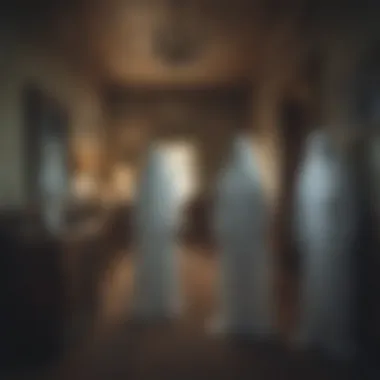
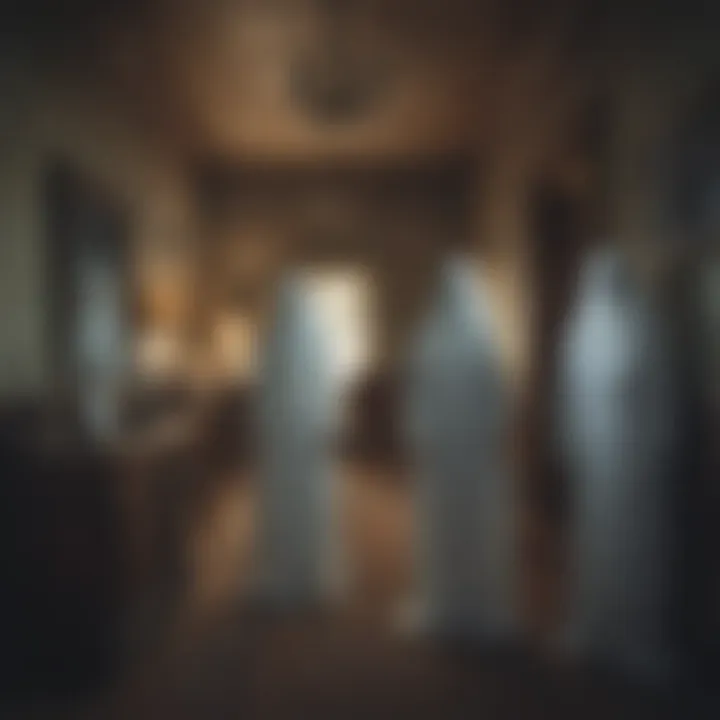
In contrast, the Headless Horseman from Washington Irving's The Legend of Sleepy Hollow pulls a thread from the Anglo-American folklore. This incorporation of local myth and tale showcases how stories reflect societal anxieties. It's fascinating to see that while these specters might be rooted in specific geographical narratives, they often carry universal themes of love, loss, and the struggle to make sense of the unknown.
Asia's Rich Tapestry of Ghost Narratives
The tales of ghosts in Asia display a nuanced understanding of the afterlife, blending elements of spirituality, culture, and social norms. Take, for instance, the Hungry Ghost Festival celebrated in various countries like China. During this time, families pay respects to deceased ancestors, believing they return to visit the living. The rituals and offerings made during this festival speak to an ingrained respect for the dead, which prominently shapes these narratives.
Additionally, the Yurei in Japanese folklore reflects the cultural significance of spirits. These restless souls, often depicted in white funeral garments, represent individuals who died with unresolved conflicts. Their stories highlight the importance of proper rituals and ceremonies to honor the deceased, embodying a deep-seated belief in reciprocity between the living and the dead.
Each of these cultural narratives offers valuable insights into how human beings navigate the mysterious terrain of life and death. They help decipher societal themes, highlight cultural beliefs, and reinforce community bonds across generations.
Encounters with the Unknown
Encounters with the unknown often ignite a blend of curiosity and trepidation within us. This section strives to elucidate why examining these ghostly encounters holds significance in the broader framework of human experience. The tales that emerge from these confrontations often serve as a lens through which one can dissect cultural beliefs, personal fears, and communal narratives.
- Understanding the Unknown: At its core, an encounter with the unknown pushes the boundaries of our understanding. Often, these situations engender wider discussions about what constitutes reality versus perception.
- Cultural Significance: Different cultures have their unique spin on ghostly encounters. These stories can be a rich source of local history, folklore, and social norms. By exploring how different societies interpret these events, one gains insight into their values and fears.
- Emotional Resonance: Ghost encounters don't just tickle our imagination; they touch various emotional chords. They can evoke nostalgia, fear, intrigue, or even comfort—a manifestation of our desire to connect with the beyond.
- Societal Reflection: Often, these narratives mirror societal issues and conflicts. For instance, hauntings tied to historical injustices may act as a reminder of past grievances, urging society to reconcile with its history.
In summary, the exploration of encounters with the unknown paves the way for a deeper understanding of the unseen forces shaping our world and consciousness.
Investigating Haunted Sites
The art of investigating haunted sites frequently brings together diverse communities, including skeptics and believers alike. This confluence creates a unique atmosphere for dialogue and inquiry. The very act of visiting these locations can conjure a host of feelings, revealing much about human nature in the process.
Ghost hunters often approach these investigations methodically, employing a range of techniques. For example:
- Historical Research: Understanding the history of a site is paramount. Local legends, documented incidents, and historical events often entwine, creating fertile ground for ghost stories.
- EMF Detectors: Many ghost hunters utilize electromagnetic field (EMF) detectors, theorizing that disturbances in the electromagnetic spectrum may signal paranormal activity.
- Audio Recordings: Eerie auditory phenomena are often reported at haunted sites. Tools like audio recorders allow investigators to capture what might go unnoticed by human ears.
Through the process of investigating these haunted sites, participants often embark on a journey that challenges their beliefs and encourages critical thinking about what lies beyond our immediate perception.
Personal Experiences with Paranormal Activity
Personal experiences serve as powerful conduits for sharing encounters with the unknown. These narratives often resonate deeply with audiences, revealing how individual perception plays a substantial role in shaping one's belief system around ghosts and hauntings.
Consider the following elements that shape these experiences:
- Subjectivity of Experience: Each person’s sensitivity to paranormal activity varies. What sends shivers down one spine might go unnoticed by another. These disparities underscore the many layers of individual human perception.
- Impact of Context: The environment plays a significant role. Factors such as time of day, mood, and social context often influence how experiences are interpreted. A dark, dusty attic may feel eerie to one person but merely nostalgic to another.
- Emotional Connections: Often, personal accounts of ghostly encounters are tied to deeper emotional narratives—loss, longing, unresolved matters—which add richness to the storytelling.
"Personal stories of the paranormal create a bridge between reality and imagination, fostering a collective memory of what might exist beyond the veil of our existence."
These personal experiences create a tapestry of narratives that not only intrigue but also offer a glimpse into the human psyche's inclination towards the mysteries that elude rational explanation.
The Ethics of Ghost Storytelling
Ghost stories, rich with tradition and cultural significance, invite not only entertainment but also scrutiny when it comes to telling them. As we dive deeper into the ethics surrounding ghost storytelling, we uncover the vital considerations that should shape how tales of the paranormal are shared and perceived.
Responsible Reporting in Paranormal Investigations
When engaging with ghostly narratives, the concept of responsible reporting holds paramount importance. It isn't merely about recounting spine-chilling encounters or sharing hair-raising tales. Instead, it demands a commitment to truthfulness and integrity in the presentation of experiences. Here’s what to keep in mind:
- Accuracy: It’s essential to provide a clear and honest representation of events. There’s a temptation to embellish details for dramatic effect, yet such practices can taint the authenticity of the narrative.
- Verification of Claims: Engaging in thorough research helps validate the stories one chooses to share. Interviewing witnesses, checking historical data, and seeking corroboration can lend credibility.
- Intent: The purpose of sharing ghost stories should be scrutinized. Is it to inform, educate, or simply entertain? Clarity of intent can guide how stories are framed and delivered.
"Ghost stories travel through time, each retelling shaping public perception. Accuracy is key to keep them alive in minds and hearts."
While plenty of sensationalism exists within the paranormal realm, responsible reporting emerges as a lighthouse—guiding us to recount stories with respect and careful consideration.
Cultural Sensitivity in Ghost Narratives
Cultural sensitivity is another crucial aspect when narrating ghost stories. Each culture possesses its unique beliefs, practices, and histories surrounding the supernatural. Here’s how to navigate these complexities respectfully:
- Respecting Traditions: Ghost tales often carry deep cultural roots. Ignoring or trivializing these traditions can be perceived as offensive and diminish the stories’ significance. Acknowledging their origins fosters a connection to cultural heritage.
- Avoiding Stereotypes: It's key to prevent perpetuating stereotypes while sharing ghost narratives from any specific community. Labeling communities with generalized views can lead to oversimplifications and misrepresentations.
- Inclusivity: Encompassing diverse perspectives enriches the storytelling experience. Acknowledging various viewpoints not only broadens the narrative but also shows appreciation for the richness of cultural expressions.
In essence, the ethics of ghost storytelling is entwined with a commitment to responsible reporting and cultural respect. As audiences grow more discerning, embracing these ethical standards caters to a sophisticated appreciation of ghostly encounters. Whether through tales of haunted houses in North America or spirits of folklore across Europe, each story finds its place in human experience, reflecting our shared fears and beliefs.



